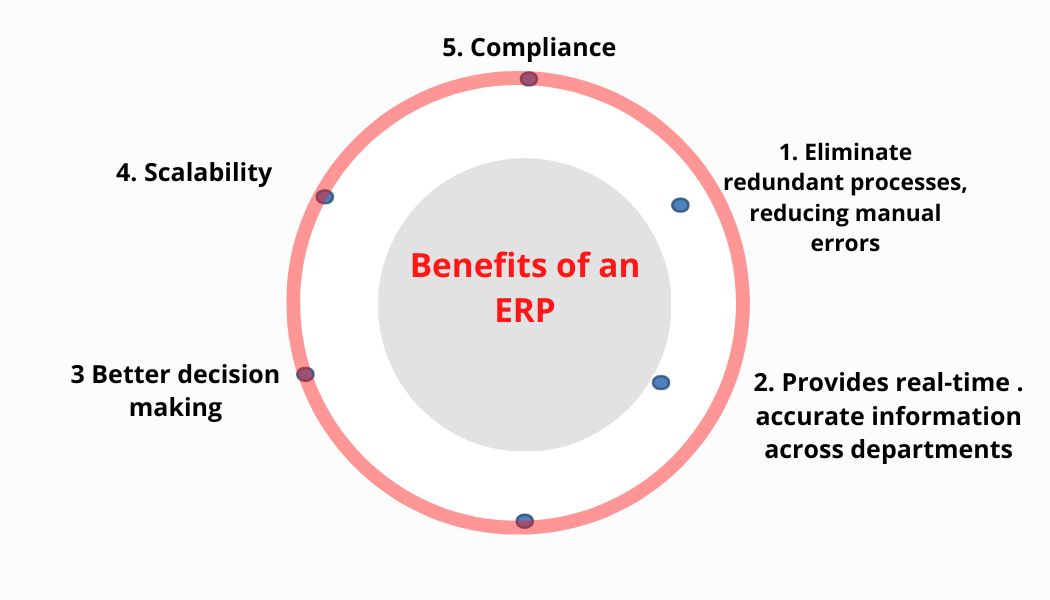In today’s fast-paced world of modern business, staying competitive and efficient is crucial. One way to achieve this is by adopting an Enterprise Resource Planning (ERP) system. However, the implementation of an ERP frequently fails due to a poor ERP system selection. In this article, I will explain why an ERP implementation might fail, and provide a roadmap to choose and implement the ERP right for you.
Why the implementation of an ERP might fail?
Implementing an Enterprise Resource Planning (ERP) system can be a complex and challenging endeavor, and there are several reasons why ERP implementations might fail. I will illustrate the point with some statistics:
- According to a study by Panorama Consulting Solutions, about 57% of ERP projects exceed their planned budgets.
- A study by Gartner indicates that up to 75% of ERP projects fail to deliver the expected benefits due to inadequate ERP system selection.
- A study by Computer Economics found that 29% of organizations cited a lack of vendor support as a reason for ERP project failure.
- The Standish Group’s CHAOS Report states that inadequate project management contributes to 18% of ERP project failures.
All of these elements can be summed up in two factors: ERP system selection and ERP implementation planning. This article focuses on the first element.
What is an ERP and why are the befits
ERP systems are integrated software solutions that streamline and centralize various business processes, making operations more efficient and data-driven. They are designed to integrate and automate core business processes, such as finance, human resources, inventory management, supply chain, and customer relationship management. These systems offer several benefits:

Guideline for ERP system selection
Define Your Objectives: Start by identifying your business objectives and what you aim to achieve with an ERP system. Understanding your goals will guide your selection process.
Assess Your Current Processes: Analyze your existing business processes to determine where improvements can be made. Identify pain points and areas that need automation.
Budget and Resources: Establish a realistic budget for the ERP system, considering upfront costs and ongoing maintenance. Assess your internal resources and expertise for implementation.
Choose Deployment Options: Decide whether you want an on-premises ERP system or a cloud-based solution. Cloud-based systems offer flexibility and scalability, while on-premises solutions provide more control.
Research ERP Vendors: Research ERP vendors and their offerings. Consider factors such as industry specialization, scalability, user-friendliness, customer support and training assistance.
Request Proposals: Request proposals and demos from selected vendors. Evaluate how well their systems align with your business needs.
Scalability and Customization: Ensure the ERP system can grow with your business and be customized to meet specific requirements.
Data Migration and Integration: Discuss data migration and integration capabilities with vendors. Data transfer should be seamless, and the system should integrate with your existing software.
Vendor Support: Assess the level of support and maintenance provided by the vendor. Quick and reliable support is crucial for resolving issues promptly.
Pilot Implementation: Consider a pilot implementation to test the system on a smaller scale before full deployment.
Evaluate Total Cost of Ownership (TCO): Look beyond the initial costs and consider the long-term TCO, including maintenance, upgrades, and licensing fees.
Promoting USA and ERP system selection
Selecting the right ERP system is a strategic decision that can significantly impact your business’s efficiency and competitiveness. Promoting USA can assist you in structuring and planning the vendor selection and system implementation. If you want to learn more, give us your information to schedule a meeting.
I will continue to post information related to trade channel management, general economy and market trends. If you are interested in this article or want to learn more about Promoting USA, please subscribe to stay updated on future articles.

